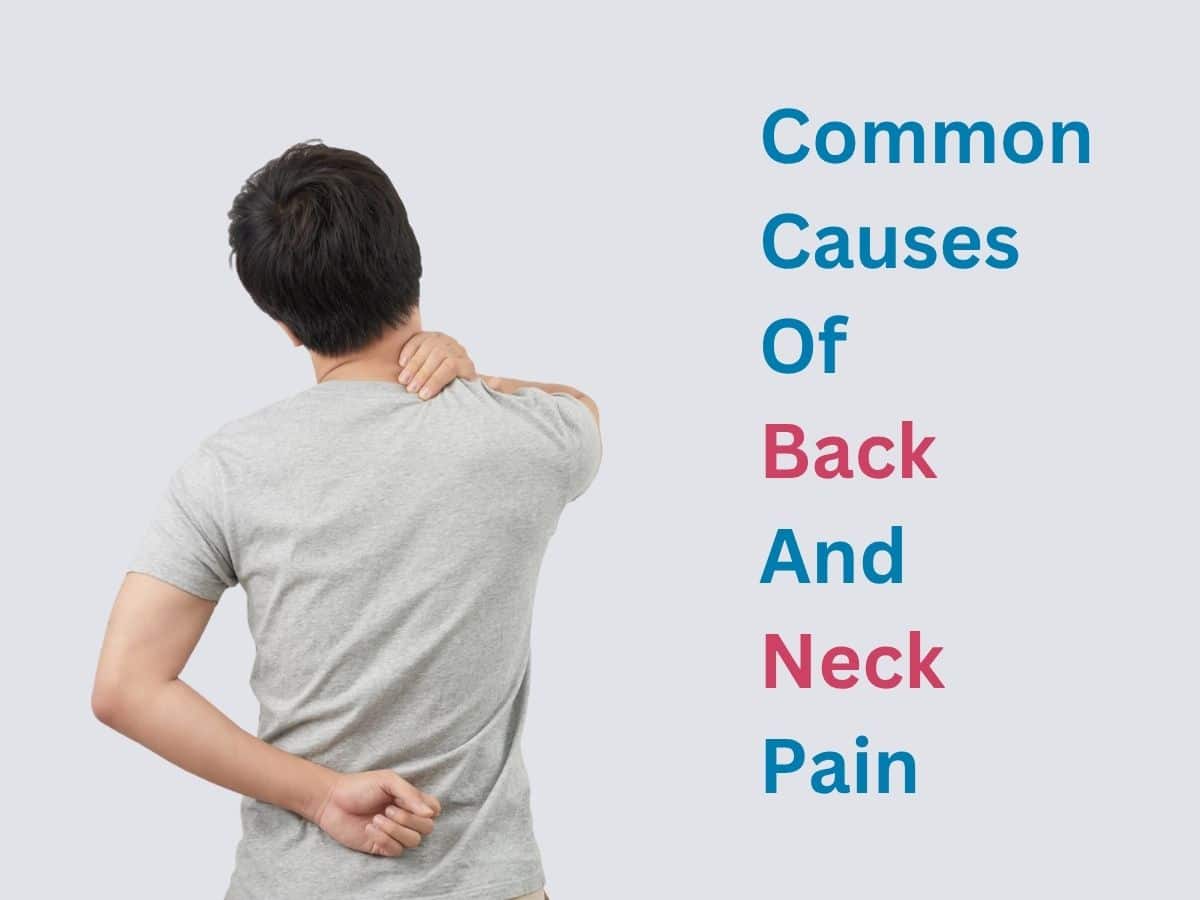
Common Causes of Back and Neck Pain

Back and neck pain are among the most common complaints affecting people of all ages. Whether due to poor posture, injury, or an underlying medical condition, these pains can significantly impact daily activities and overall quality of life. Understanding the root causes and taking preventive measures can help manage and reduce discomfort.
Common Causes of Back Pain
1. Poor Posture
Sitting or standing with improper posture, especially for long periods, can strain the muscles and ligaments of the back, leading to chronic pain.
2. Muscle Strains
Overuse, heavy lifting, or sudden movements can cause small tears in back muscles, leading to pain and stiffness.
3. Herniated or Bulging Discs
The spinal discs act as cushions between the vertebrae. When a disc protrudes or ruptures, it can press on nearby nerves, causing pain, numbness, or weakness.
4. Arthritis and Degenerative Conditions
Conditions like osteoarthritis or degenerative disc disease cause gradual wear and tear of the spine, leading to chronic pain and reduced mobility.
5. Sciatica
Compression of the sciatic nerve, which runs from the lower back down to the legs, can cause sharp pain, tingling, or numbness in the lower back and legs.
6. Spinal Stenosis
Narrowing of the spinal canal can put pressure on nerves, resulting in back pain and discomfort, especially in older adults.
7. Injuries and Accidents
Car accidents, falls, or sports injuries can lead to fractures, sprains, or damage to the spine, causing long-term pain.
Common Causes of Neck Pain
1. Poor Ergonomics and Posture
Looking down at phones, working long hours at a computer, or sleeping with inadequate support can strain the neck muscles.
2. Whiplash
Sudden jerking of the head, often due to car accidents or sports injuries, can strain neck muscles and ligaments, leading to pain and stiffness.
3. Cervical Disc Problems
Herniated or degenerating discs in the neck can compress nerves, causing pain, weakness, or tingling in the shoulders, arms, and hands.
4. Tension and Stress
Emotional stress can cause muscle tightness in the neck and shoulders, leading to discomfort and headaches.
5. Osteoarthritis in the Neck
Aging and wear-and-tear can lead to cervical spondylosis, which causes neck pain, stiffness, and reduced flexibility.
When to See a Doctor for Back or Neck Pain
While mild back and neck pain often resolves with rest and home care, seek medical attention if you experience:
- Persistent pain lasting more than a few weeks
- Radiating pain to the arms or legs
- Numbness, tingling, or weakness in limbs
- Difficulty walking or standing for extended periods
- Loss of bladder or bowel control (this is a medical emergency)
Treatment and Prevention Strategies
1. Improve Posture
- Maintain a straight spine while sitting and standing.
- Use ergonomic chairs and proper screen height when working on a computer.
2. Strengthen Core Muscles
- Regular exercise, including yoga and pilates, helps strengthen back and neck muscles.
- Targeted physical therapy can improve muscle support.
3. Use Heat and Cold Therapy
- Apply cold packs to reduce inflammation.
- Use heating pads to relax stiff muscles.
4. Stay Active
- Avoid prolonged bed rest, which can weaken muscles.
- Engage in low-impact activities like swimming or walking.
5. Seek Professional Treatment
- Physical therapy and chiropractic care can help correct misalignments.
- Pain management techniques like acupuncture, massage, and medication can provide relief.
- Surgical intervention may be necessary for severe cases of spinal conditions.
Back and neck pain are common but can often be managed with lifestyle changes, posture correction, and appropriate treatments. If you experience persistent discomfort, it’s essential to seek professional guidance.
For expert advice and treatment options, consult the best orthopedic specialist in Hyderabad, Dr. Kushal Hippalgaonkar, who specializes in spinal health and orthopedic care. Whether through physical therapy, pain management techniques, or surgical intervention, Dr. Kushal helps patients find relief and regain mobility.
By understanding the causes and taking preventive measures, you can keep your spine healthy and enjoy a pain-free life!






